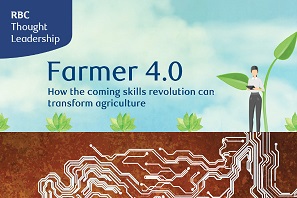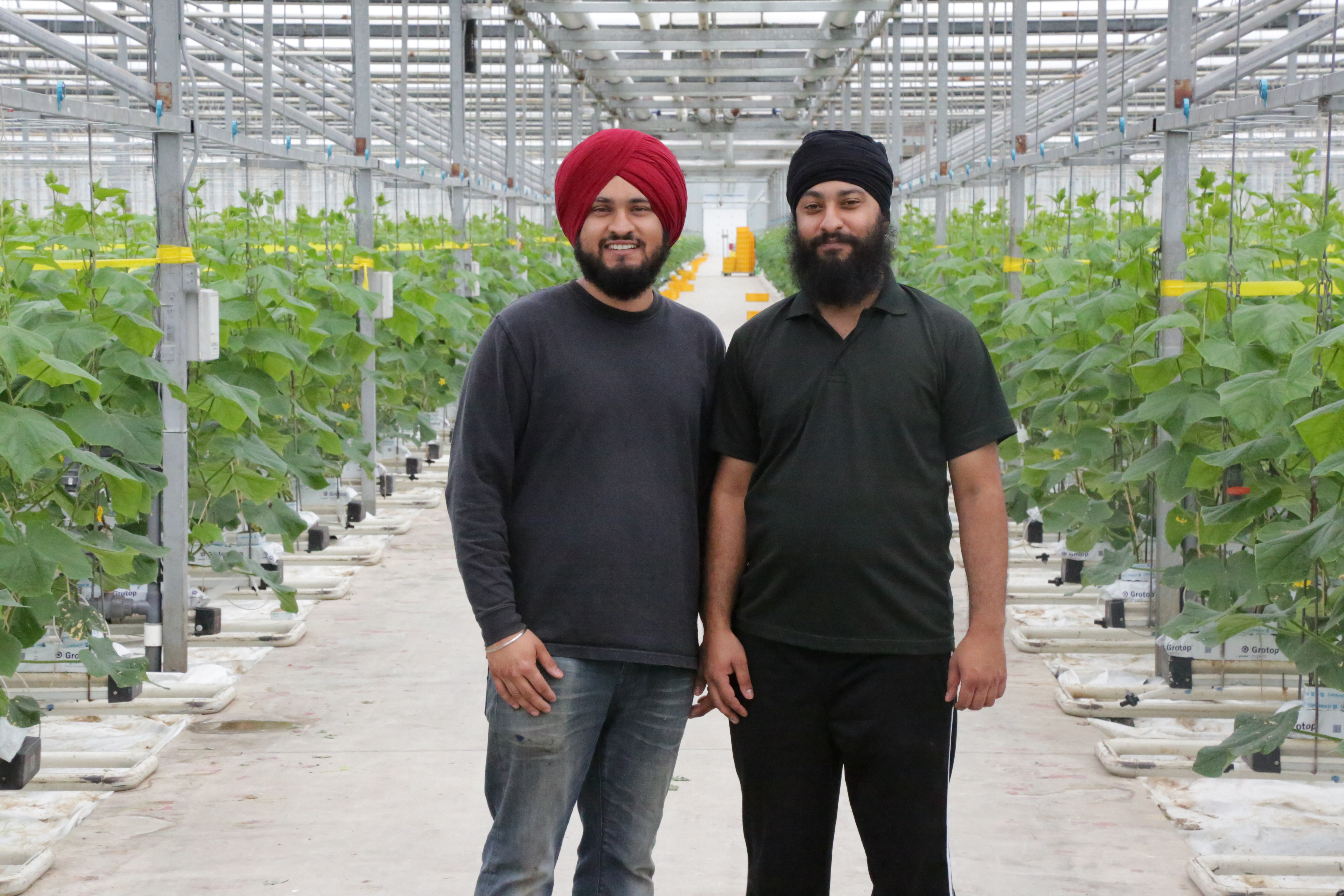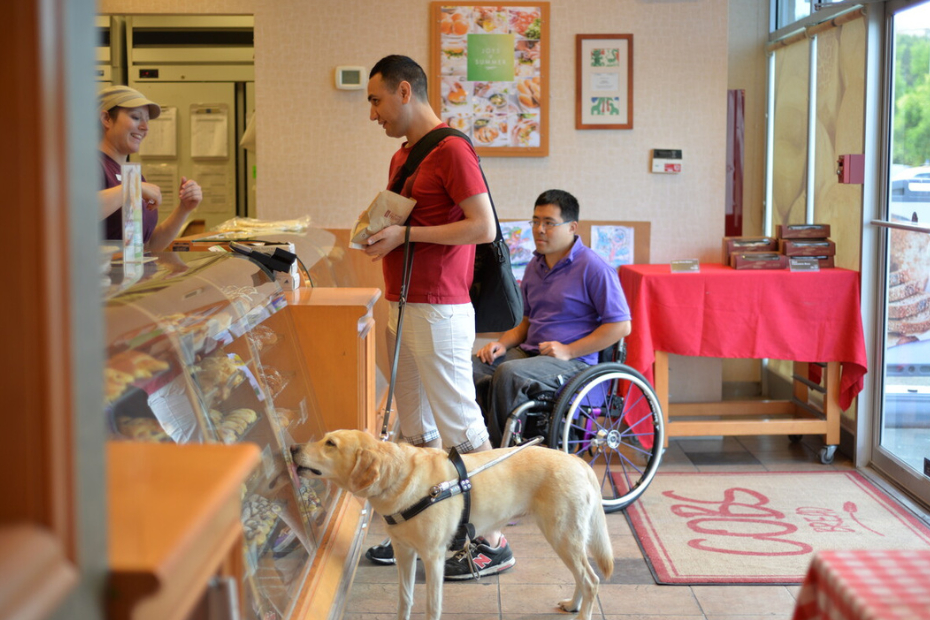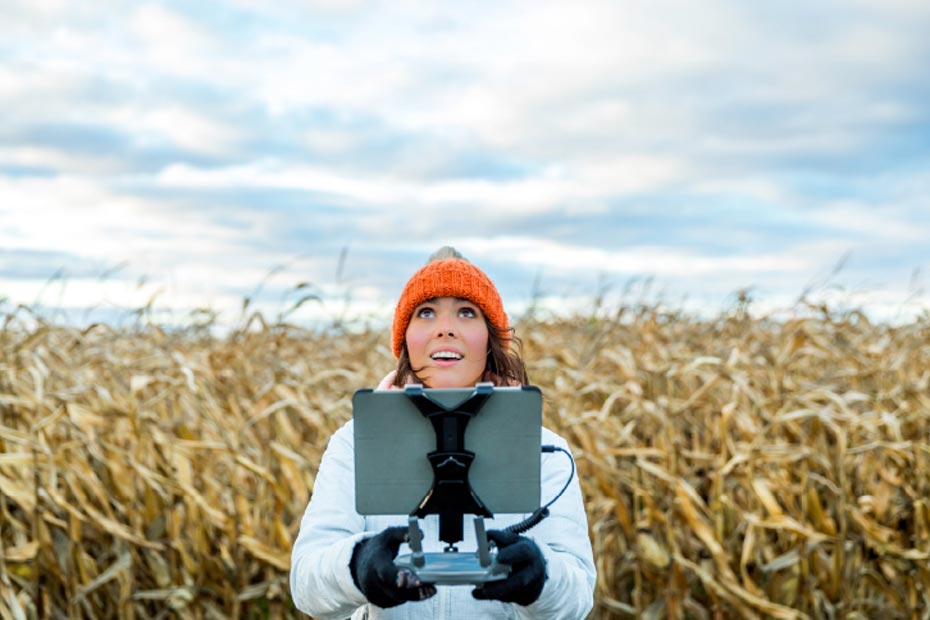Yet, vegetables are the most human-intensive food products to produce, and the sector is heading towards an enormous labour shortage in the 2020s.
In a recent RBC report, Farmer 4.0: How the coming skills revolution can transform agriculture, our researchers identified greenhouses as a “frontier” sector for automation, with great potential to boost output and alleviate labour shortages. Today, for every $1 spent on labour, greenhouses produce $3.88 in revenue; while at the other extreme, beef operators earn $33.73 by leveraging efficiencies of machinery and scale.
Making such a transformation for indoor vegetables requires innovative, data-driven and high-skilled agricultural business owners to take risks and seize the opportunities presented by advanced technologies.

Read the Full Report
The next Generation of Farmer
Hardeep and Teranjit Singh – business partners and brothers – exemplify the traits needed to succeed in the fourth agricultural revolution. As operators of Singh Greenhouses in Flamborough, Ontario, they ship 15 million English cucumbers per year across Canada and the U.S., grown over 24 acres of greenhouses. They are part of an incoming generation of young agricultural producers that bring a mix of experience, education and experimentation to a sector undergoing a high tech revolution.
“To succeed in this industry today, you have no choice but to go to school to gain the requisite knowledge,” Hardeep says. “Precision agriculture has become the standard.” An agriculture graduate of the University of Guelph, he is looking to bring a universe of digital, scientific and automation solutions into their business to reduce costs and boost output.
Data has become a fertile input for their business decisions. Last year, the Singhs instituted a new digital tracking system across their facility that allows them to monitor the health and output of their 154,000 plants in real time. The system has also given them a trove of data on their productivity, which they’re using to set targets and offer performance incentives to their 33 greenhouse staff.
For Teranjit, a graduate of Niagara College’s greenhouse technician program, improving product quality and reducing input costs through technology is a central focus. “The industry is changing so fast. We need to continuously learn about what has and hasn’t worked across the sector to make the best business decisions.” On example is a new cogeneration facility, where they produce electricity for nearly 9,000 area homes and capture the resulting CO2 to optimize greenhouse growing conditions.
Forming Human-machine Partnerships
The looming labour challenge for the greenhouse sector is severe. According to research by the Canadian Agricultural Human Resources Council (CAHRC), the sector will need to address a shortage of 29,900 domestic workers, or 55% of roles, within a decade. Already, over 40% of greenhouse and horticultural staff are temporary foreign workers, accounting for nearly two-thirds of all the foreign workers in agriculture.
A major question for researchers in the sector is, how can technology alleviate the labour gap? A leader in this effort is the Vineland Research and Innovation Centre, which is working on robotic cucumber harvesters. “The technology is still developing, where tasks that are low skill for human hands remain complex for machinery,” says Tania Humphrey, Vineland’s Chief Science Officer. “But even as machines learn best practices, complex biological systems will remain that require human intervention.”

For the Singhs, attracting and retaining staff is a perpetual challenge, in physically demanding jobs. “This line of work is a lifestyle that may require four hours one day and 14 on another, Hardeep says.” To normalize some of these pressures, they have invested in a new optical and robotic sorting, grading and packing line that can handle 14,000 cucumbers in an hour. Once in place, they will be able to divert the labour saved from the packing facility to tend and harvest more crops.
Mixing Traditional with Tomorrow’s Skills
With an increasingly digital and mechanized workplace, the skills required of greenhouse workers are changing, and educators are having to update how they train students to be job ready in the sector. At the University of the Fraser Valley, robotics and automation was added to its horticulture program in 2014. The school has been working closely with industry to identify the skills needed for the agricultural jobs of tomorrow and has shifted its greenhouse program towards more project oriented assignments. Students are challenged to draw on various data and hands-on learning to question “how do we do this better?”
Tom Baumann, an associate professor at UFV, says that agriculture educators need to “marry the old knowledge and the new technology” and encourage students to problem solve in an environment that uses both. He sees further automation of the sector as a necessity, but stresses how detrimental “losing agricultural knowledge to an algorithm” would be.
Capturing the Skills Benefit
Disruption is happening across the agri-food industry in Canada. New, high-skilled roles are emerging that promise to attract a new generation of food producer. If we are able to match people with the right skills to these jobs, our research shows that Canadian agriculture could add an additional $11 billion in output by 2030.
This growth mindset is deep-seated between Hardeep and Teranjit Singh. They’ve already broken ground on a new greenhouse, where they will expand to new crops – peppers and baby cucumbers – and leverage their experience and skills with new technology and data. This is the fourth agricultural revolution in action.

For more insights about social, economic and technological trends, please visit the RBC Thought Leadership website.
This article is intended as general information only and is not to be relied upon as constituting legal, financial or other professional advice. A professional advisor should be consulted regarding your specific situation. Information presented is believed to be factual and up-to-date but we do not guarantee its accuracy and it should not be regarded as a complete analysis of the subjects discussed. All expressions of opinion reflect the judgment of the authors as of the date of publication and are subject to change. No endorsement of any third parties or their advice, opinions, information, products or services is expressly given or implied by Royal Bank of Canada or any of its affiliates.



















